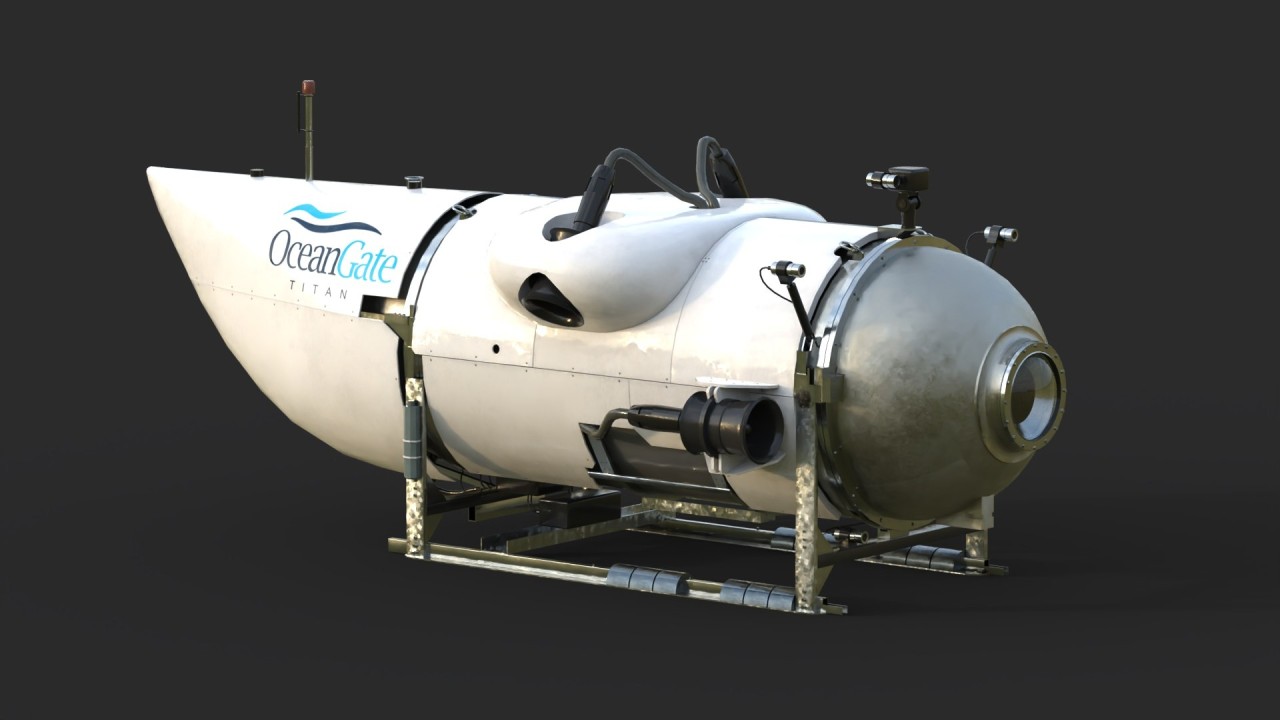Does the mass of the water make an appreciable difference in the end result, I wonder? It seems like the effects would get drowned out at these depths. Much like the effect of the sub itself is drowned out and ignored in the calculation.
I suspect that neither the mass of the water nor the mass of the Titan's shell contribute significantly to the rate of collapse (see discussion below row of asterisks). But my issue with the LinkedIn article is that, according to the physical picture
he presents, the mass of the water would need to be included, since he's determing the acceleration from the force exerted by the water, and the mass of what is pushed inward. Thus, regardless of whether his physical picture is correct or not (I don't think it is), it has a problem right from the start, which is that it's not self-consistent. [Plus he calculated p = 58 atm at 1900 m, when it's actually 188 atm.]
*************
According to this 2013 review article
LeBlanc, J., Ambrico, J., Turner, S. (2014). Underwater Implosion Mechanics: Experimental and Computational Overview. In: Shukla, A., Rajapakse, Y., Hynes, M. (eds) Blast Mitigation. Springer, New York, NY. https://doi.org/10.1007/978-1-4614-7267-4_6.
"The physics of an implosion event is shown to be similar to the collapse of cavitation and underwater explosion bubbles."
This is not my field, but models for bubble radius vs. time are typically based on the external pressure and other intensive (i.e., instrinsic) properties (those that don't depend on the amount of the substance). Some models use the density, kinematic viscosity, and surface tension of water; others use the density and speed of sound for both the water and the interior gas (which, for a cavitation bubble, would also be water).
Extending that to the collapse of the Titan, I don't think the mass of either the shell or the water would be important determining factors for the rate of collapse (the mass of the water would matter only through its density).
Here's a sample equation from
Geers, Thomas L., and Kendall S. Hunter. "An integrated wave-effects model for an underwater explosion bubble." The Journal of the Acoustical Society of America 111.4 (2002): 1584-1601 ,
as summarized in the above review article:
"Geers and Hunter (
2002) have expanded upon previous work through the inclusion of wave effects in both the surrounding fluid as well as the internal bubble gasses through the use of doubly asymptotic approximations (DAA). The inclusion of these wave effects allows for bubble wall velocities in excess of the fluid sound speed by accounting for localized compressibility of the surrounding fluid. For the case of incompressible flow (no localized wave effects), the equation of motion for the bubble surface can be described using the Rayleigh–Plesset equation. The corresponding equation of motion with the inclusion of external fluid and internal gas compressibility through the DAA method is presented as:
""
[For those not familiar with the above notation: This is a second-order differential equation. The R's topped by one and two dots are the first and second derivatives, respectively, of the bubble radius with respect to time.]
For a simpler, approach, there's the standard Rayleigh–Plesset equation (
https://en.wikipedia.org/wiki/Rayleigh–Plesset_equation#cite_note-Kudryashov2015-8). Alas, I tried solving it, and was unable to.
Or we could go even simpler, and use the Rayleigh equation, which ignores the surface tension and viscosity included in Rayleigh-Plesset. According to
Kudryashov, Nikolay A., and Dmitry I. Sinelshchikov. "Analytical solutions of the Rayleigh equation for empty and gas-filled bubble." Journal of Physics A: Mathematical and Theoretical 47.40 (2014): 405202 , if we ignore the pressure from the interior gas (which would be insignificant relative to the outside pressure), the collapse time, Tc, for a
spherical bubble containing no gas can be obtained from:
Tc = 𝛏 R * sqrt (𝛒/p)
where:
𝛏 = 0.914681
R= bubble diameter
𝛒 = density of water
p = water pressure
Thus, for a spherical bubble whose radius equals that of the Titan's carbon fiber cylinder, and ignoring the Titan's shell, and the viscosity and surface tension of the water (and other things), we have, as a first approximation (I plugged the numbers into Mathematica and let it do the unit conversions), collapse times of 4 ms and 6 ms, respectively, at the Titanic's depth and at half the Titanic's depth:
Note: Here I use the external diameter/2 rather than the internal diameter/2 I used in my first post.
Would any fluid dynamics experts like to chime in?


